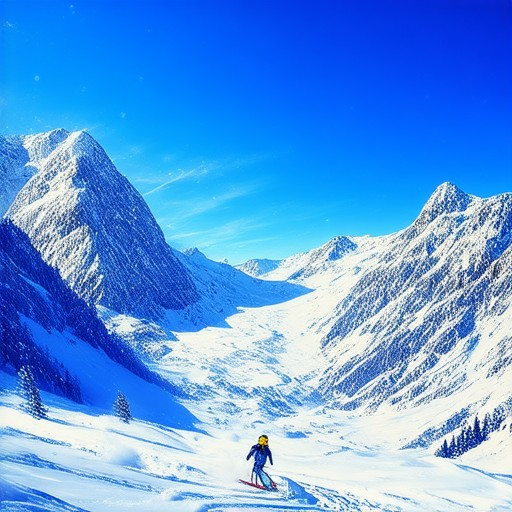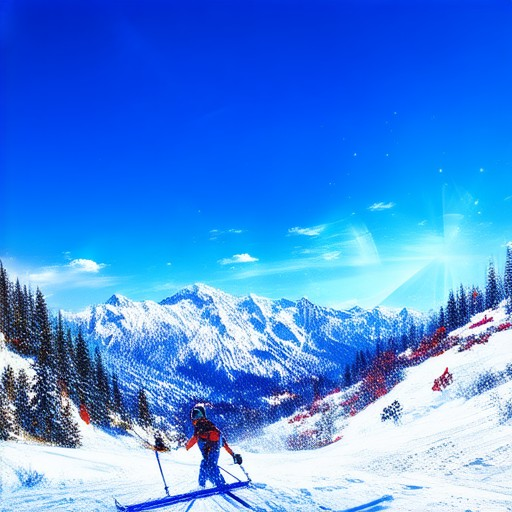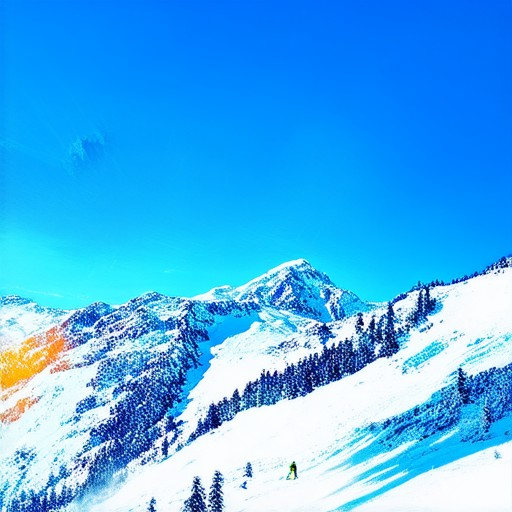Ski touring offers an unparalleled way to explore the mountains, combining the thrill of downhill skiing with the adventure of touring through untouched powder. For beginners, the idea of embarking on their first ski touring journey might feel overwhelming, but with the right preparation and knowledge, anyone can master the basics. Whether you’re looking to escape the crowds or simply test your boundaries, ski touring provides a unique blend of physical challenge and mental fulfillment. In this guide, we’ll walk you through everything you need to know to get started, from understanding the fitness requirements and choosing the right equipment to navigating the complexities of backcountry skiing. If you’re ready to take the plunge into the world of ski touring, let’s dive in and uncover the secrets to becoming a confident and skilled touring enthusiast.
Key Takeaways
- Intermediate to Advanced Skiing Skills: For ski touring, you’ll need at least intermediate to advanced abilities, especially for handling varied snow conditions.
- Physical Fitness is Key: Build stamina and strength to carry a 30-40 lb backpack; consider activities like hiking with a weighted pack or strength training.
- Gain Diverse Skiing Experience: Prioritize skiing in different environments to adapt to challenges like variable snowpack and technical terrain.
- Choose the Right Destination: Select ski areas that match your skill level—beginner-friendly spots for ease, more challenging locations for experienced tourers.
- Thorough Planning is Essential: Research routes carefully, considering distance, elevation changes, and weather forecasts for safety and enjoyment.
- Essential Safety Gear: Always carry an avalanche transceiver, probe, and shovel; know how to use them to stay protected.
- Understand Avalanche Risks: Learn about hazard indicators and avoid risky zones; consider taking an avalanche safety course.
- Tour Safely in Groups: Skiing with experienced companions improves safety, especially for newcomers.
- Optimal Timing and Seasons: Winter months offer stable snow conditions; early season tours can be peaceful, while mid-winter provides established trails.
- Start with Day Trips: Gradually progress from short tours to multi-day expeditions to build confidence.
- Age Isn’t a Limit: Skiing doesn’t have an official age limit; physical ability and determination are more important than age.
- Learns Quickly at Any Age: Adults can learn skiing through lessons offered at many resorts.
- Mental and Emotional Readiness: Mature and determined individuals can excel and enjoy the sport.
- Join a Community: Skiing offers a social aspect, connecting with peers who share a passion for the sport.
- Ski Length for Touring: Touring skis are typically 5-15 cm shorter than your height for balance and control; experienced skiers may opt for skis closer to their height.
- Consider Terrain and Skill: Technical courses may benefit from shorter skis, while smoother trails can handle slightly longer skis.
- Test Ski Lengths: Try different lengths during demos or rentals to find the best fit for your skiing style and terrain.
- Supported by Top Brands: Use resources from brands like Atomic and Salomon, designed for adult learners.

Ski Touring Fitness Requirements
Ski touring demands a high level of physical fitness due to the combination of climbing and descending slopes, often carried by a heavy backpack. Here’s a breakdown of the fitness requirements:
- Endurance: Maintain a steady pace of approximately 300 meters of vertical ascent per hour. This ensures sustained energy levels throughout the day.
- Strength: Develop strength in your legs and core to handle the weight of your backpack, which typically ranges between 20-30 kilograms. Strong arms and upper body strength aid in maneuvering your skis.
- Flexibility: Incorporate stretching exercises to improve mobility and reduce the risk of injury from repetitive motion.
- Techinque: Mastering efficient skiing techniques can enhance your ability to cover more distance with less effort, contributing to overall endurance.
- Mental Stamina: Prepare mentally to stay focused during long tours, as this helps maintain rhythm and control, ultimately boosting performance and safety.
To prepare effectively, consider the following steps:
- Build Endurance: Engage in activities like trail running, cycling, or hiking to boost your cardiovascular capacity.
- Strengthen Muscles: Focus on leg and core-strengthening exercises, such as squats, lunges, and planks.
- Stay Flexible: Practice yoga or dynamic stretching to improve joint flexibility and muscle mobility.
- Refine Technique: Take lessons or practice regularly to optimize your skiing efficiency.
- Train Mentally: Simulate tour conditions through mental rehearsal or group discussions to enhance your mental resilience.
Gradually increase the length and difficulty of your tours to assess your fitness level and make necessary adjustments. A well-prepared body and mind will allow you to enjoy multi-day ski tours with greater comfort and confidence.
Can You Backcountry Ski as a Beginner?
Yes, you can definitely backcountry ski as a beginner with the right preparation and mindset. Backcountry skiing is a rewarding experience, offering fresh powder and untouched trails, but it requires careful planning and respect for the terrain. Here’s a step-by-step guide to help you get started:
1. Start with Lift-Accessed Backcountry
As a beginner, it’s wise to begin with lift-accessed backcountry skiing. This allows you to access groomed trails and terrain that’s less challenging than true backcountry. Many resorts offer backcountry ski passes that provide access to nearby bowls or glades. This is a great way to build your skills and confidence before venturing into the wilder backcountry.
2. Prepare Thoroughly
- Physical Fitness: Backcountry skiing is physically demanding. Ensure you’re in good shape with endurance and strength. Consider hiring a personal trainer or joining a fitness group to prepare.
- Take Lessons: Sign up for beginner-specific backcountry skiing lessons. A professional instructor can teach you the basics of skiing, avalanche safety, and navigation.
- Check Snow Conditions: Before heading out, check avalanche forecasts and snowpack stability in the area you’ll be skiing. This is crucial for safety.
3. Equip Yourself
- Skis and Bindings: Rent or purchase high-quality backcountry skis with touring bindings. These allow you to climb skin tracks and descend efficiently.
- Boots: Invest in lightweight, flexible backcountry boots that provide excellent support and traction.
- Poles: Carbon fiber poles are lightweight and provide better control on steep terrain.
- Clothing: Dress in layers, including moisture-wicking base layers, insulating midlayers, and waterproof shells. Add gloves, goggles, and a helmet for protection.
4. Master Basic Techniques
- Balance and Weight Distribution: Keep your body centered over your skis and distribute your weight evenly.
- Turning: Practice short, controlled turns to navigate through trees and rocks.
- Stopping: Use your brakes effectively and avoid sliding.
- Pole Use: Utilize your poles for balance and leverage, especially on steep descents.
5. Prioritize Safety
- Avalanche Awareness: Learn to identify unstable snow conditions and carry the necessary tools for rescue.
- Travel with Companions: Never ski alone. Let someone know your plans and stick to safe group sizes.
- Emergency Gear: Carry a beacon, probe, and shovel in case of an avalanche.
6. Choose the Right Spot
For your first backcountry adventure, choose a popular destination with marked trails and manageable terrain. Some recommended spots include:- Grand Teton National Park (WY)- Mount Baker-Snoqualmie National Forest (WA)- Unaweep Canyon (CO)
7. Stay Positive and Patient
Backcountry skiing can be challenging, but it’s worth it for the incredible views and fresh powder. Don’t rush and enjoy the journey. Most importantly, progress takes time, so be kind to yourself and have fun!
Learn more about our rock music community

How Hard is Ski Touring?
Ski touring is considered a challenging and demanding activity due to its combination of skiing downhill and skinning uphill. The effort required can vary depending on factors such as terrain, snow conditions, and individual fitness levels.
- Physical Demand: Skinning uphill requires significant cardiovascular endurance and leg strength. Carrying skis, poles, and often additional gear can add to the physical strain.
- Technical Skills: Proper technique is essential, including using skins and poles effectively to minimize fatigue during climbs.
- Navigation: Route planning and awareness of avalanche risks are critical components of safe touring.
- Comparison to Other Activities: While less intense than marathon running, it is more strenuous than casual hiking due to the need to alternate between climbing and gliding.
Why It’s Challenging
The unique demands of ski touring require a blend of endurance, strength, and technical proficiency. Beginners should expect to develop a strong base of fitness and learn proper techniques before tackling longer tours.
Getting Started
- Start Small: Gradually build up tour length and difficulty to avoid overexertion.
- Proper Gear: Invest in high-quality touring skis, skins, and poles to enhance efficiency and comfort.
- Guidance and Training: Consider joining group tours or seeking instruction from experienced guides to master the fundamentals.
Mental and Environmental Challenges
Ski touring also presents mental and environmental challenges, including dealing with extreme weather conditions and navigating varied terrains. Proper preparation and mindset are key to enjoying the experience.
Conclusion
Ski touring is not for the faint-hearted, but it offers a unique way to explore mountainous regions with a strong sense of accomplishment. With the right preparation and attitude, anyone can enjoy this rewarding activity.
Explore our ski touring equipment guide for more details

When Can I Start Ski Touring?
Ski touring is an exciting activity that combines skiing with exploration, but it’s important to approach it with the right preparation and mindset. Here’s a breakdown of what you need to consider:
1. Skill Level
- Intermediate to advanced skiing ability is recommended. You should feel comfortable skiing on red runs and have experience with varying snow conditions, such as powder and crust.
2. Physical Fitness
- Ski touring requires stamina and strength, especially when carrying a 30-40 lb backpack. Building endurance through activities like hiking with a weighted pack or strength training can enhance your readiness.
3. Experience
- Prioritize gaining experience in diverse skiing environments. This helps you adapt to different challenges, whether it’s variable snowpack or technical terrain.
4. Destination Selection
- Choose a destination that aligns with your skill level. Beginner-friendly areas often have gentler slopes and predictable conditions, while more challenging locations suit experienced tourers.
5. Planning
- Research your route thoroughly, considering factors like distance, elevation changes, and weather forecasts. Proper planning enhances safety and enjoyment.
6. Safety Equipment
- Essential gear includes an avalanche transceiver, probe, and shovel. Familiarize yourself with their use to mitigate risks.
7. Avalanche Risk Management
- Understand avalanche hazard indicators and avoid risky zones. Consider enrolling in an avalanche safety course for added protection.
8. Group Dynamics
- Touring with experienced companions can provide support and safety. Group travel is generally safer, especially for newcomers.
9. Timing and Seasonality
- Optimal times are typically during the winter months when snow conditions are more stable. Early season tours may offer fewer crowds, while mid-winter provides established trails.
10. Duration and Itinerary
- Begin with day trips to assess your capabilities before undertaking multi-day expeditions. This phased approach allows for gradual progression.
Conclusion
While there’s no definitive timeline, personal readiness in skill, fitness, and knowledge is paramount. Starting with controlled, well-prepared tours and continuous learning ensures a successful and enjoyable ski touring experience.
Is 25 Too Late to Start Skiing?
Skiing is a sport that can be learned at any age, and 25 is certainly not too late to start. Many people begin skiing in their 20s and 30s and enjoy the thrill of the sport for decades to come.
- Age is Not a Barrier: There is no official age limit for skiing. Physical ability, skill level, and determination are far more important factors than age. At 25, you are still young enough to develop the necessary strength, endurance, and flexibility required for skiing.
- Learning Curve: While skiing may take some time to master, especially for beginners, it is a skill that can be learned at any stage of life. Many resorts offer lessons for adults, catering to individuals who may be new to the sport.
- Mental and Emotional Preparation: Skiing can be physically demanding, but it also requires mental focus and emotional resilience. At 25, you bring a level of maturity and determination that can help you overcome challenges and improve quickly.
- Social Aspect: Skiing often involves a sense of community. Many skiers in their mid-20s find themselves surrounded by peers who share a passion for the sport, making it a rewarding experience socially as well.
If you’re considering giving skiing a try, don’t hesitate. Visit [oedipusband.com](https://oedipusband.com/) to explore resources and guides tailored for adult learners. Brands like [Atomic](https://www.atomic-sports.com/) and [Salomon](https://www.salomon.com/) offer excellent equipment and support for skiers of all levels.

How Tall Should Ski Be for Touring?
For touring skis, the optimal length is generally recommended to be 5-15 cm shorter than your height. This length balances comfort and control, making it easier to manage hairpin turns uphill while still allowing for sufficient speed downhill. However, experienced skiers may choose skis closer in length to their height for improved responsiveness and confidence on varied terrain.
Considerations:
- Experienced Skiers: As skill levels increase, some may opt for skis nearly as long as their height, leveraging greater control and efficiency.
- Terrain and Skill Level: Technical courses may benefit from a shorter ski for sharper turns, while smoother trails might allow a slightly longer ski for efficiency.
- Weight and Bindings: While weight can influence ski choice, length primarily affects control and maneuverability, with bindings playing a role in compatibility.
Ultimately, testing different lengths during a demo or rental session can provide the most personalized and effective experience for any skier.



0 Comments